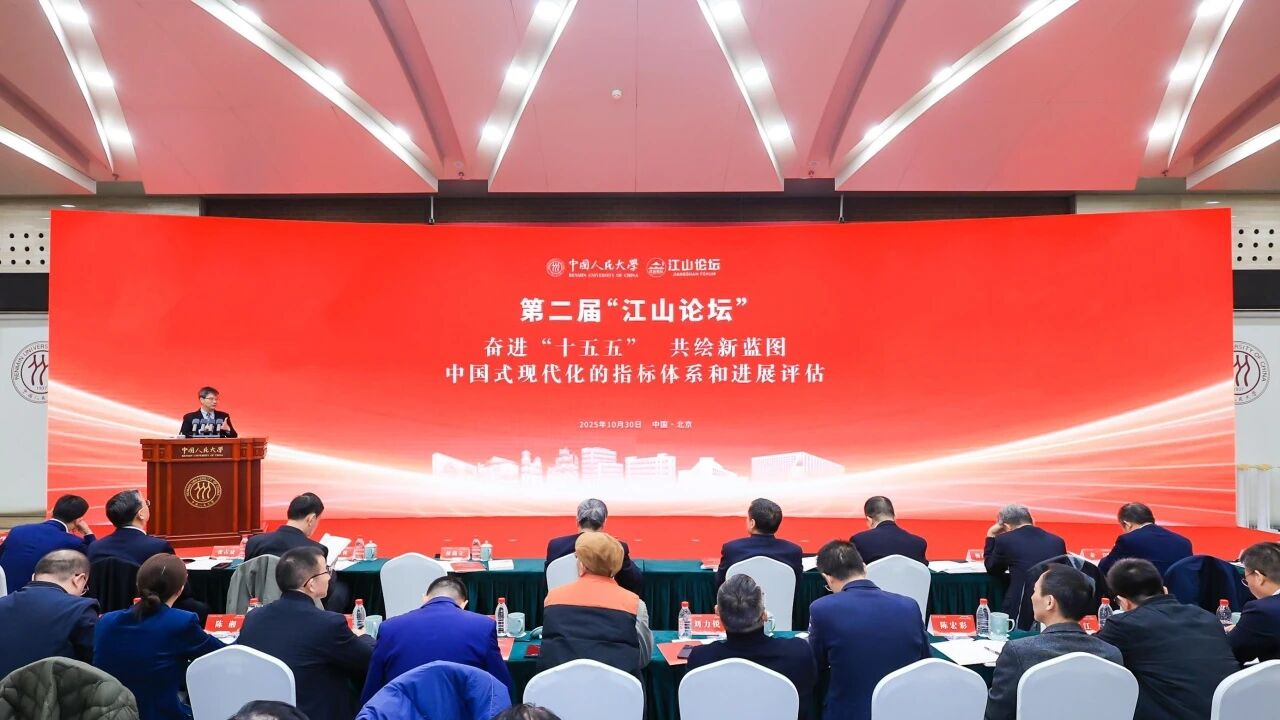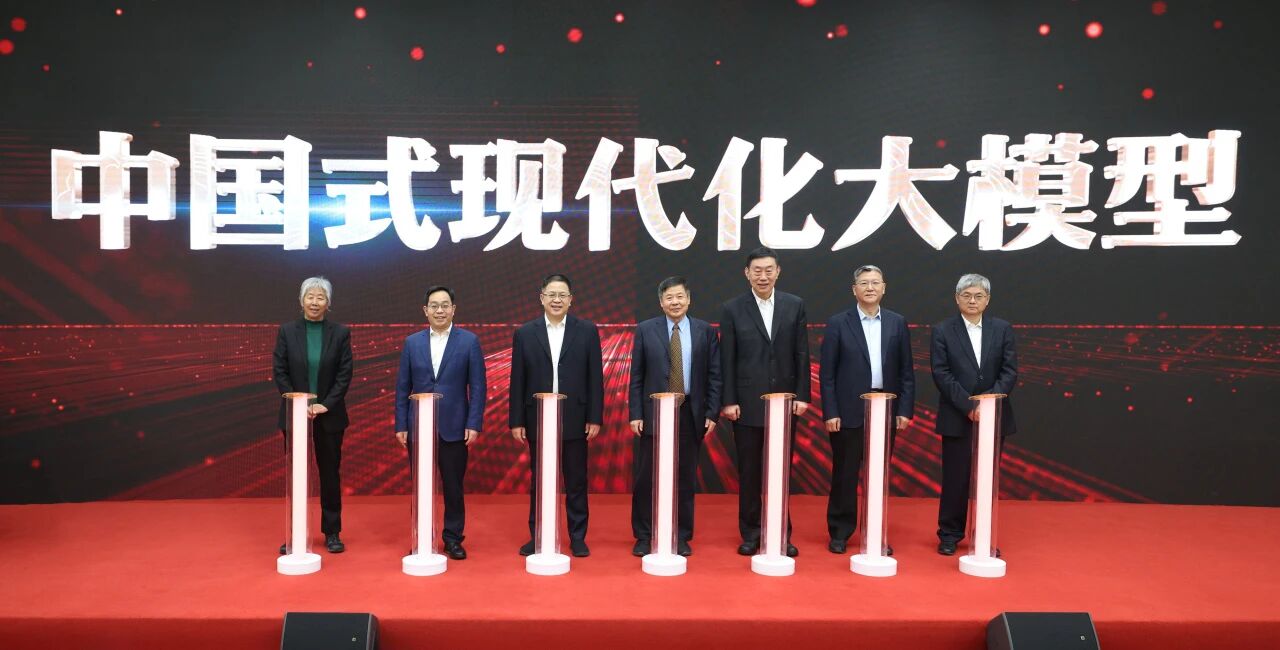
The second Jiangshan Forum is held at Renmin University of China, Beijing, October 30, 2025. /RUC
Renmin University of China (RUC) has initiated a major technological undertaking – the Chinese Modernization Large Model key project – aimed at transforming the national strategic vision into a measurable, tangible and model-based practice. The announcement came at the second Jiangshan Forum this week, which gathered policymakers and scholars to study and implement the spirit of the recently concluded Fourth Plenary Session of the 20th Communist Party of China Central Committee.
Jointly organized by RUC's National Academy of Development and Strategy and the Zhejiang Provincial Party School, the Jiangshan Forum served as a high-level platform linking government, academia and industry for intellectual deliberation on the next phase of the Chinese modernization process, as China prepares the 15th Five-Year Plan from 2026 to 2030.
A data-driven approach to China's modernization

The Chinese Modernization Large Model Project launched in Beijing. /RUC
The launch of the Chinese Modernization Large Model marks a significant step towards the algorithmic assessment of national strategy. It will use a general large language model (LLM) as its technical foundation to build a specialized dataset and model specifically for monitoring and evaluating Chinese modernization. The platform is designed to offer interactive functions, including browsing, querying, statistical analysis and smart decision-making, providing a visualized and professional analysis of the country's progress.
RUC President Lin Shangli articulated in his opening remarks that advancing Chinese modernization is a gradual and spiral process. He emphasized the necessity of embedding the concept of Chinese President Xi Jinping – "The country is the people, and the people are the country" – into the modernization assessment framework.
"This historical process requires confidence from ideological theory and directional calibration from scientific indicators," Lin said, calling for the creation of a people-centered evaluation system built on systemic thinking, dynamic optimization and a distinctly Chinese assessment paradigm to support the nation's development through the next five years.
Modernization as China's defining mission
A series of keynote speeches examined how China's modernization path, defined by economic strength, social inclusion and self-reliance, will evolve in the coming decade.
Former vice finance minister Zhu Guangyao identified the 15th Five-Year Plan period as a critical phase in realizing national modernization goals, emphasizing that China's model seeks common prosperity, harmony between humans and nature, and peaceful development, and will continue to contribute to global peace and development through initiatives like the Belt and Road Initiative and the four global initiatives – the Global Development Initiative, the Global Security Initiative, the Global Civilization Initiative and the Global Governance Initiative.
Li Peilin, a senior scholar at the Chinese Academy of Social Sciences, said the next stage of modernization would depend on China's super-large market advantage to develop new quality productive forces, its robust industrial system to mitigate uncertainty, and its vast human resources to foster innovation and withstand global uncertainties.
Zhang Zhanbin, from the Central Party School, called for a renewed focus on high-quality growth, particularly through strengthening the manufacturing sector, boosting innovation capacity, and expanding domestic demand while maintaining openness to the global economy.
Yang Ruilong, dean of RUC's Chongshi College, argued that China must adopt a dual-engine strategy, combining technological innovation and institutional reform, to enhance productivity and sustain long-term growth.
Reports highlight regional practices and policy insights
The forum also saw the release of two major research documents: one evaluated progress between 2020 and 2024 and proposed targeted recommendations in areas such as economic security, public welfare, regional coordination and environmental protection; the other analyzed Zhejiang Province's reform experiences as a model for province-level modernization through institutional innovation.
Five sub-forums were held simultaneously in Beijing, Yibin, Shenzhen, Suzhou and Fuzhou, exploring regional modernization themes including technological innovation in the Beijing-Tianjin-Hebei region, high-quality development along the Yangtze River, and cross-strait integration.








 User Center
User Center My Training Class
My Training Class Feedback
Feedback












Comments
Something to say?
Login or Sign up for free